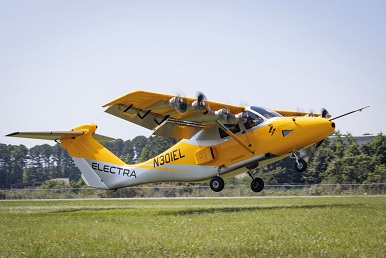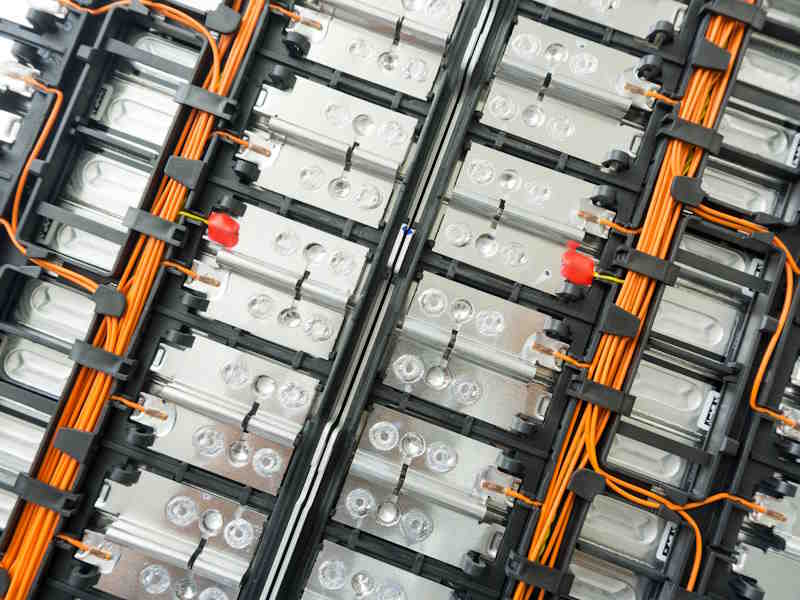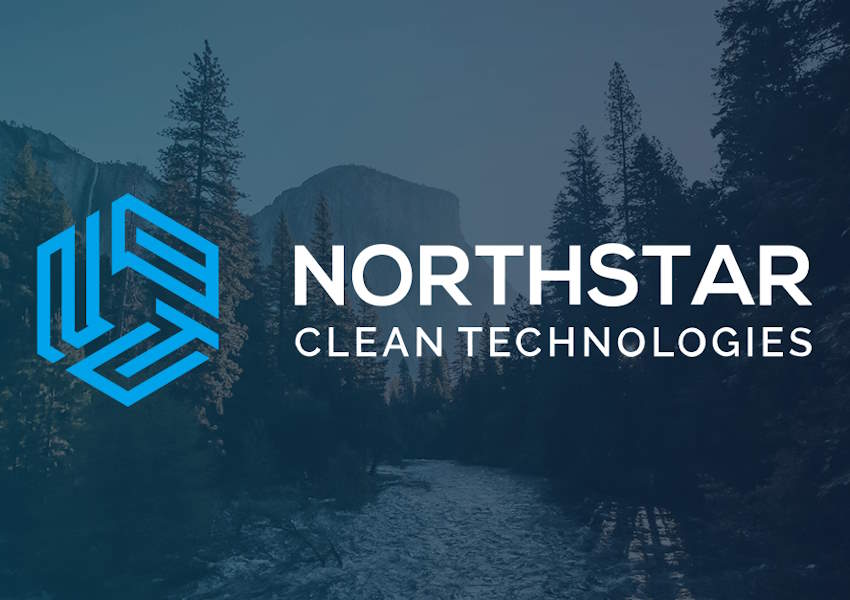Atlantic Lithium Limited - Metallurgical Profiling Continues to Deliver
- Exploration Update
- Metallurgical Profiling Continues to Deliver Ewoyaa Lithium Project Ghana, West Africa
Atlantic Lithium Limited (AIM:ALL)(OTCQX:ALLIF) ("Atlantic Lithium" or the "Company"), the funded African-focussed lithium exploration and development company targeting to deliver West Africa's first lithium mine, is pleased to announce positive metallurgical test-work results in support of the Pre-Feasibility Study ("PFS") underway for the Ewoyaa Lithium Project ("Ewoyaa" or the "Project") in Ghana, West Africa.
Figures and tables referred to in this release can be viewed in the PDF version available via this link:
http://www.rns-pdf.londonstockexchange.com/rns/9588N_1-2022-6-7.pdf
HIGHLIGHTS:
- Metallurgical profiling using Heavy Liquid Separation ("HLS") at a coarser 10mm crush size delivers primary lithium concentrate recoveries of up to 80% in the dominant P1 material.
- Dense Medium Separation ("DMS") replicates HLS results at pilot scale, providing confidence in the proposed gravity plant design to deliver an economic outcome.
- Results support a low capex gravity separation plant at a coarser 10mm primary crush size; comparing favourably to the Scoping Study base case at a finer 6.3mm crush.
- Lithium and feldspar concentrate quality test-work conducted to date exceeds off-taker requirements and can be achieved using standard gravity separation techniques.
- Test-work completed on a total of 1,700kg of drill core in 64 composites tested across the Ewoyaa Project footprint with a focus on the first five years of planned mine production.
- Test-work completed in support of the PFS study now underway with targeted delivery Q3 2022.
Commenting on the Company's latest progress, Lennard Kolff, Interim Chief Executive Officer of Atlantic Lithium, said:
"Results have successfully demonstrated that we are able to produce high-purity, low contaminants 6% Li2O SC6 spodumene concentrate at a coarse 10mm crush, which is much coarser than previously projected in the Scoping Study, providing potential for lower operating costs; especially within the dominant P1 material.
"Results have consistently delivered lithium and feldspar concentrate quality that exceeds off-taker requirements and reaffirms the suitability of a simple dense medium gravity separation process route, boding well for low capital costs, operating costs and carbon intensities.
"Results of the metallurgical test-work programme are a key deliverable in support of the Pre-Feasibility Study, targeted for completion in Q3 2022.
"The Project is exceptionally well located, being only 1km from the sealed national highway and 110km from the operating deep-sea port of Takoradi with adjacent grid power; we believe it is challenging to find better located lithium pegmatite projects elsewhere.
"With Ewoyaa being funded to production through our agreement with Piedmont Lithium, these metallurgical results continue to highlight the exceptional potential of the Project and the value that it brings to the Company and our shareholders."
PFS Metallurgical Test-Work
A comprehensive set of heavy liquid separation ("HLS") tests have been completed on all of the Ewoyaa deposits where drill core was available. The objective was twofold:
- To profile the metallurgical response of the newer-discovered deposits against the previously studied Ewoyaa Starter and Ewoyaa Main deposits.
- To inform the makeup of composites for larger scale piloting using a 250mm Dense Medium Separation ("DMS250") cyclone which best indicates how the Project will behave at mine scale.
The current Mineral Resource Estimate ("MRE") of 30.1Mt @ 1.26% Li2O consists of 25.1Mt of coarser grained P1 type mineralisation and 5Mt of finer grained P2 type mineralisation with an overall 20.5Mt in the indicated category across both pegmatite types.
Previous work reported on 25 November 2020, with HLS testing at a crush size of 6.3mm, demonstrated that:
- Recoveries of 62% to 78% of 6% lithia concentrates ("SC6") were achievable on the coarser P1 mineralisation at mass yields of 12% to 22%.
- Recoveries of 30% to 50% of SC6 were achievable on the finer P2 mineralisation at mass yields of 5% to 10%.
These previous results were confirmed by smaller scale 100mm Dense Medium Separation ("DMS100") tests and provided confidence that HLS was a reliable predictor of performance.
This newly reported programme of testing has focussed on using HLS data for metallurgical profiling with DMS follow-up of larger composites. This utilised larger scale DMS250 pilot testing, which was used to inform process plant design for the PFS, in conjunction with plant modelling, and provides a better indication of how the Project will behave at mine scale.
Based on metallurgical test-work results received to date, the P1 type mineralisation is more amenable to gravity only processing, with lower recoveries achieved in the finer grained P2 type mineralisation via DMS only at the same 6.3mm and 10mm crush sizes tested.
A total of approximately 1,700Kg of diamond drill core from 64 composites across 12 pegmatites within the Ewoyaa Project were logged, packed and shipped to NAGROM Perth in Western Australia for test-work (refer Figure 1).
Figure 1: Composite sample locations across the Ewoyaa Project and pegmatites.
6.3mm versus 10mm HLS Comparison:
The Company has always strived to de-risk the project by adopting a phased approach to its studies and development. Central to this approach is to commence operations using a gravity only plant to limit the operational complexity, the capital requirements and lead time to production. Previous work (refer RNS of 25 November 2020) indicated that acceptable recoveries and mass yield may be achieved at a coarser crush size of 10mm, compared to the 6.3mm adopted in the previous test series. Coarser crush sizes are more suited to gravity plants and also result in lower unit operating costs when compared to 6mm crush sizes.
The first series of tests were aimed at comparing the crush size and a total of 12 samples were selected from the Ewoyaa Starter, Ewoyaa Main and Anokyi Main pits to compare HLS results at 6.3mm crush size to 10mm. Both were screened at 0.5mm prior to HLS testing with results shown in Table 1.
The results in Table 1 demonstrate that economic primary grades and mass yields, typically at >5.5% Li2O SC6 can be achieved at 10mm crush size which is more favourable in a DMS gravity plant than at 6.3mm crush size. The results also show that recoveries are indicative of the amount of P2 mineralisation in the feed and that the finer 6.3mm crush size has delivered a better result. This is to be expected as the finer P2 mineralisation requires finer crushing to liberate the spodumene crystals. Total P1 to P2 deportment in the current mineral resource model is 80% P1 and 20% P2.
Plant operating costs are better optimised if it is possible to crush the initial plant feed to 10mm and configure the gravity plant to remove as much product at this crush size as possible. Products include SC6 concentrate, <1mm DSO fines, and feldspar concentrate. In some other plants, the practice is to then re-crush a much-reduced tonnage of middlings to 6mm, providing the recovery benefit of a finer crush at reduced tonnage throughputs and cost. The results shown in Table 1 do not include the effect of re-crushing middlings, so would expect to see further improved recoveries and yields.
Table 1: Comparison of Crush Sizes
Sighter flotation tests on P2 mineralisation have previously indicated recoveries of 50% to 80% can be achieved (refer RNS of 21 May 2019). This will be tested further in the Definitive Feasibility Study ("DFS") phase and provides future optionality for increased P2 recoveries.
The mine planning and scheduling for the PFS will prioritise P1 material over P2 material given the higher recovery achievable for P1 through the gravity separation plant. P2 material will be stockpiled for processing at the back end of the mining schedule, or possibly through a conventional flotation circuit to improve P2 recoveries further, which will be evaluated via specific test-work during the DFS phase.
To maintain focus of the metallurgical test-work programme on generating data for plant design, it was decided to conduct the remainder of the test-work programme for the PFS at a 10mm crush size.
10mm HLS Tests:
A total of 64 composites for approximately 1,700kg of half PQ and HQ diamond drill core were sampled based on the drill logs from all of the deposits drilled across the Project footprint. Each composite was crushed to 10mm and screened at 0.5mm prior to HLS testing with results summarised in Table 2 and Figure 2 below.
The Ewoyaa Project consists of twelve pegmatite deposits and clusters which occur in two dominant orientations; north-south orientation (Ewoyaa Starter, Ewoyaa Main, Ewoyaa South 1&2 and Ewoyaa North) and east-west orientation (Ewoyaa North-East, Okwesi North & South, Anokyi, Grasscutter East, Abonko NW & Quarry and Kaampakrom). The north-south oriented pegmatites host a mix of P1 and P2 mineralisation, whereas the east-west oriented pegmatites are predominantly P1 material only. Composite sample locations relative to the separate mining areas are shown in Figure 1 with individual HLS composite results in Figure 2.
Table 2: 10mm HLS Summary results (average by material type by deposit)
From the results in Table 2, higher recoveries, yields and concentrate grades are consistently achieved for P1 material when compared to P2 material, and the majority of results achieve less than 1% Fe2O3 and greater than 5.5% SC6 grade at a coarse 10mm crush. Results from the HLS variability samples show good repeatability across the deposits and material types and confirm that the Project deposits will produce 6% SC6 spodumene concentrate with low contaminants at a 10mm crush, especially within the dominant P1 material.
Subsequent to the HLS work, composites were chosen for more detailed examination at a larger scale, using a 250mm pilot scale cyclone plant ("DMS250").
Figure 2: Summarised HLS results for P100 10mm +0.5mm for all composites not including Li losses in DSO fines (Blue = P1, Green = P2, blue/green hatching = mixed P1/P2, dark shading for Fresh and light shading for transitional material, bars numbered by composite ID)
DMS250 Tests:
Representative P1 and P2 fresh composites based on the mine schedule were made from Ewoyaa Starter, Ewoyaa Main and Anokyi material, which represent approximately the first 5 years of planned production and included the amount of P2 material that was scheduled at the time of testing: 10% for Ewoyaa Starter, 34% for Ewoyaa Main and nil for Anokyi.
The DMS250 test-work is designed to provide a simulation that approximates likely mine scale process plant characteristics at pilot plant scale test. The composites were crushed to 10mm and screened at 1mm. A second Ewoyaa Starter sample was screened at -0.5mm for comparison. The DMS250 plant was run sequentially to produce both an SC6 lithium product and a feldspar product.
The DMS250 results (refer to Table 3), with fines screened at 1mm for both Ewoyaa Starter (60% recovery and mass yield of 16%) and Anokyi (68% recovery and mass yield of 22%), were better than expected and compared very favourably to the HLS results which were screened at 0.5mm.
A further series of DMS250 tests were completed after the middlings fractions from the first tests were re-crushed to 6.3mm and passed back through the DMS250 circuit with results shown in Table 4.
Table 3: DMS250 results without middlings re-crush
Table 4: DMS250 results after middlings re-crushed to 6.3mm
Although the recoveries have increased significantly after re-crushing, the SC6 concentrate grades have decreased. Grades above 5.5% Li2O are still considered by the Company to be commercial in the current lithium market and the reasons for grade decrease will be investigated further during the DFS phase.
Lithium Concentrate (SC6) Quality:
In all the DMS250 tests, the combined alkali (combined K2O + Na2O) levels in SC6 were less than 3%, which is the nominal upper limit imposed by off-takers. In addition to this, the iron levels were all less than 1% Fe2O3.
The Company considers that both of these attributes, combined with a high proportion of coarse particle sized SC6 material, make the Ewoyaa concentrate attractive to potential off-takers.
Feldspar Quality:
The feldspar quality produced in the first pass DMS250 tests for Ewoyaa Starter exceeded the bottom limit of 10% alkalis (combined K2O + Na2O) at 9% mass yield. For Anokyi and Ewoyaa Main, the mass yields were much higher at 30% to 40% but at slightly lower grades. Once the DMS is adjusted to get the grade above 10%, it appears both these deposits will produce large amounts of feldspar. This will be examined further during the DFS phase.
A sample of feldspar, prepared for shipment to a potential off-taker in Europe, was crushed to 0.5mm and passed over a wet high gradient magnetic separator (WHGMS) at 17,000 gauss. Table 5 shows the significant reduction in iron content achieved, from 0.16% to 0.04%, with a mass loss to the magnetic fraction of only 4.4% and a slight improvement in the overall alkali content from 10% to 10.1% (combined K2O + Na2O).
The Company considers that these attributes make the Ewoyaa feldspar concentrate attractive to off-takers.
Table 5: Iron Removal from DMS250 Feldspar concentrate by WHGMS
Competent Persons
Information in this report relating to metallurgical results is based on data reviewed by Mr Noel O'Brien, Director of Trinol Pty Ltd. Mr O'Brien is a Fellow of the Australasian Institute of Mining and Metallurgy (AusIMM) and has sufficient experience which is relevant to the style of mineralisation and type of deposit under consideration and to the activity which he is undertaking to qualify as a Competent Person as defined in the December 2012 edition of the "Australasian Code for Reporting of Exploration Results, Mineral Resources and Ore Reserves" (JORC Code). Mr O'Brien consents to the inclusion in the report of the matters based upon the information in the form and context in which it appears.
Information in this report relating to the exploration results is based on data reviewed by Mr Lennard Kolff (MEcon. Geol., BSc. Hons ARSM), Chief Geologist of the Company. Mr Kolff is a Member of the Australian Institute of Geoscientists who has in excess of 20 years' experience in mineral exploration and is a Qualified Person under the AIM Rules. Mr Kolff consents to the inclusion of the information in the form and context in which it appears.
Information in this report relating to Mineral Resources was compiled by Shaun Searle, a Member of the Australian Institute of Geoscientists. Mr Searle has sufficient experience that is relevant to the style of mineralisation and type of deposit under consideration and to the activity being undertaken to qualify as a Competent Person as defined in the 2012 Edition of the 'Australasian Code for Reporting of Exploration Results, Mineral Resources and Ore Reserves'. Mr Searle is a director of Ashmore. Ashmore and the Competent Person are independent of the Company and other than being paid fees for services in compiling this report, neither has any financial interest (direct or contingent) in the Company.
This announcement contains inside information for the purposes of Article 7 of the Market Abuse Regulation (EU) 596/2014 as it forms part of UK domestic law by virtue of the European Union (Withdrawal) Act 2018 ("MAR"), and is disclosed in accordance with the Company's obligations under Article 17 of MAR.
For any further information, please contact:
Atlantic Lithium Limited Lennard Kolff (Interim CEO) Amanda Harsas (Finance Director and Company Secretary) This email address is being protected from spambots. You need JavaScript enabled to view it. | Tel: +61 2 8072 0640 |
SP Angel Corporate Finance LLP Nominated Adviser Jeff Keating Charlie Bouverat | Tel: +44 (0)20 3470 0470 |
Canaccord Genuity Limited Joint Company Broker Raj Khatri James Asensio Harry Rees | Tel: +44 (0) 20 7523 4500 |
Liberum Capital Limited Joint Company Broker Scott Mathieson Edward Thomas Kane Collings | Tel: +44 (0) 20 3100 2000 |
SI Capital Limited Joint Company Broker Nick Emerson Jon Levinson | Tel: +44 (0) 1483 413 500 Tel: +44 (0) 207 871 4038 |
Yellow Jersey PR Limited Henry Wilkinson Dominic Barretto James Lingfield | Tel: +44 (0)20 3004 9512 |
Notes to Editors:
About Atlantic Lithium
Atlantic Lithium (formerly "IronRidge Resources") is an AIM-listed lithium company advancing a portfolio of projects in Ghana and Côte d'Ivoire through to production.
The Company's flagship project, the Ewoyaa Project in Ghana, is a significant lithium pegmatite discovery on track to become West Africa's first lithium producing mine. The project is fully funded to production under an agreement with Piedmont Lithium for US$102m, based on the updated Scoping Study dated 7 December 2021, indicating Life of Mine revenues exceeding US$3.4bn and set to produce a premium lithium product.
Atlantic Lithium holds a 560km2 & 774km2 tenure across Ghana and Côte d'Ivoire respectively, comprising significantly under-explored, highly prospective licenses.
Glossary of Terms:
Dense Medium Separation: "DMS" is an industrial scale technique used to separate particles of higher specific gravity from particles of lower specific gravity in the presence of an artificially manufactured slurry medium usually consisting of milled ferrosilicon and water. The process is often enhanced by pressure created by pumping the mixed slurry medium and ore particles through a cyclone separating device. The process is used widely in industry for the beneficiation of coal, iron ore, diamonds, lithium and industrial minerals.
Heavy Liquid Separation: "HLS" is a simple sink/float laboratory technique that profiles particles in a crushed ore sample according to bands of specific gravity (SG). Synthetic liquids with SG's ranging from 2.3 to 3.5 can be used to separate the ore into bands of SG. When particles are added to a liquid of a certain SG, particles with lower SG float and particles of higher SG sink - hence the term sink/float analysis is often referred to.
Direct Shipping Ore Fines: "DSO" fines are produced when fine material of around less than 1mm (can be 0.5mm to 2mm) in size is screened out before ore is processed in a gravity DMS plant, as this fine ore is generally too fine to respond to the DMS process. The fines so produced have a head grade of the naturally occurring ore and markets exist for this material without further processing at site. The material is referred to as Direct Shipping Ore Fines.
6% Li2O lithium concentrate: "SC6" is a typical concentrate derived from spodumene lithium ore contains around 6% Li2O. This has become the internationally accepted standard concentrate content and is referred to as SC6 for brevity.
Sighter test-work: When designing a metallurgical test programme on ores of unknown response characteristics, it is customary to do initial tests using test conditions that are known to work on other applications or similar ores, and to refine the test procedure from there. This is referred to as sighter test-work.
P1/P2 Fresh/Trans: P1 and P2 type pegmatites as described and logged at the Ewoyaa lithium project, where P1 pegmatites are coarse grained (>20mm average spodumene crystal length) and P2 pegmatites are finer grained (<20mm average spodumene crystal length) and occur in an approximate 80% to 20% P1:P2 distribution in the mineral resource estimate. Fresh and Transitional ("Trans") refer to their degree of weathering where Fresh is un-weathered and Transitional is partially weathered.
This information is provided by RNS, the news service of the London Stock Exchange. RNS is approved by the Financial Conduct Authority to act as a Primary Information Provider in the United Kingdom. Terms and conditions relating to the use and distribution of this information may apply. For further information, please contact This email address is being protected from spambots. You need JavaScript enabled to view it. or visit www.rns.com.
Plug Into More Green Stock News
Tap into the pulse of emerging green sectors every morning. Top daily headlines from clean energy, cleantech, cannabis, and sustainable transport stocks:
More Green Stock News
More Green Stock News
| Last Trade: | US$0.16 |
| Daily Volume: | 0 |
| Market Cap: | US$118.760M |
February 01, 2023 January 30, 2023 November 29, 2022 | |






